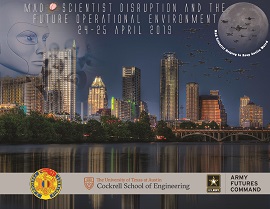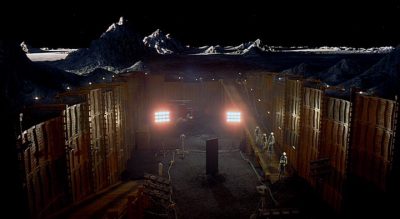[Editor’s Note: Mad Scientist Laboratory is pleased to publish today’s guest blog post by Ms. Cindy Hurst, addressing China’s continued drive for dominance regarding innovative technologies. The asymmetry in ethics existing between their benign and altruistic publicly stated policies … Read the rest
139. Mad Scientist Disruption and the Future Operational Environment Conference
Headquarters, U.S. Army Training and Doctrine Command (TRADOC) is co-sponsoring the Mad Scientist Disruption and the Future Operational Environment Conference with the Cockrell School of Engineering at The University of Texas at Austin and the U.S. Army Futures Command (AFC) … Read the rest
138. “The Monolith”
[Editor’s Note: Mad Scientist Laboratory is pleased to introduce a new, quarterly feature, entitled “The Monolith.” Arthur C. Clarke and Stanley Kubrick fans alike will recognize and appreciate our allusion to the alien artifact responsible for “uplifting” mankind from … Read the rest
137. What’s in a Touch? Lessons from the Edge of Electronic Interface
[Editor’s Note: Mad Scientist Laboratory is pleased to present today’s guest blog post by Dr. Brian Holmes, exploring the threats associated with adaptive technologies and how nefarious actors can morph benign technological innovations into new, more sinister applications. … Read the rest
136. Future Threats: Climate Change and Islamic Terror
[Editor’s Note: Mad Scientist Laboratory welcomes back returning guest blogger Mr. Matthew Ader, whose cautionary post warns of the potential convergence of Islamic terrorism and climate change activism, possibly resonating with western populations that have not been (to … Read the rest





